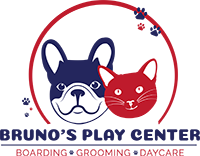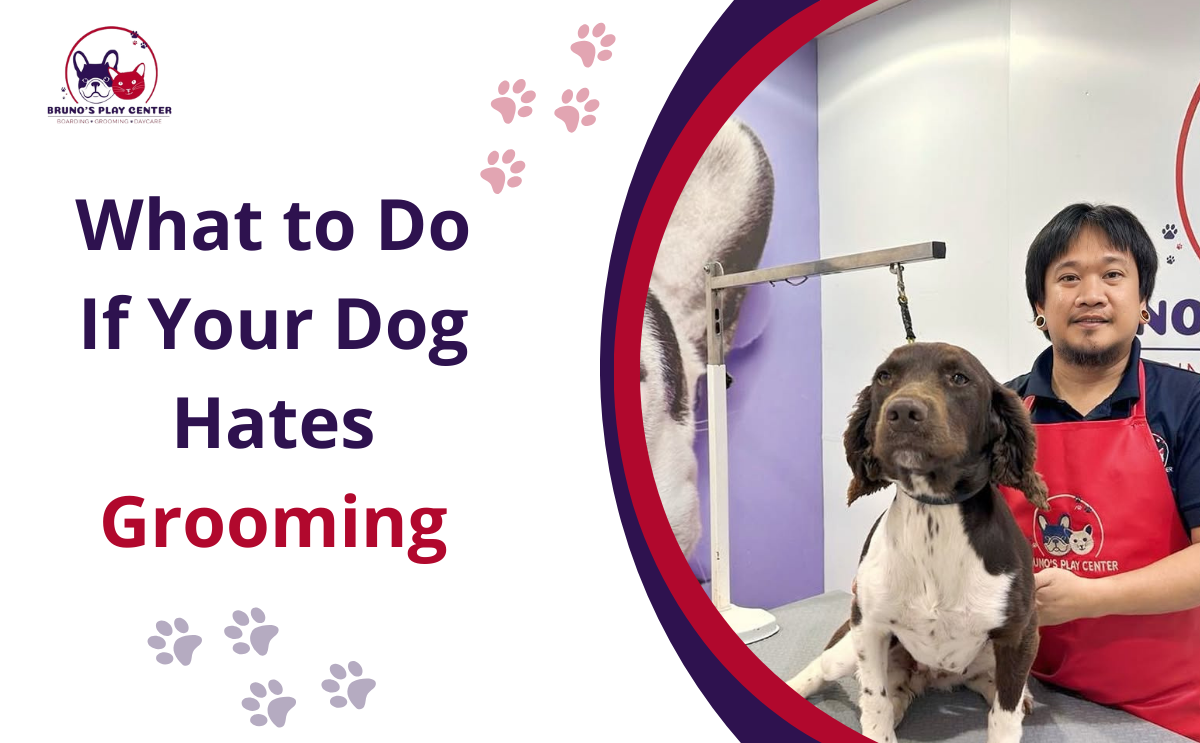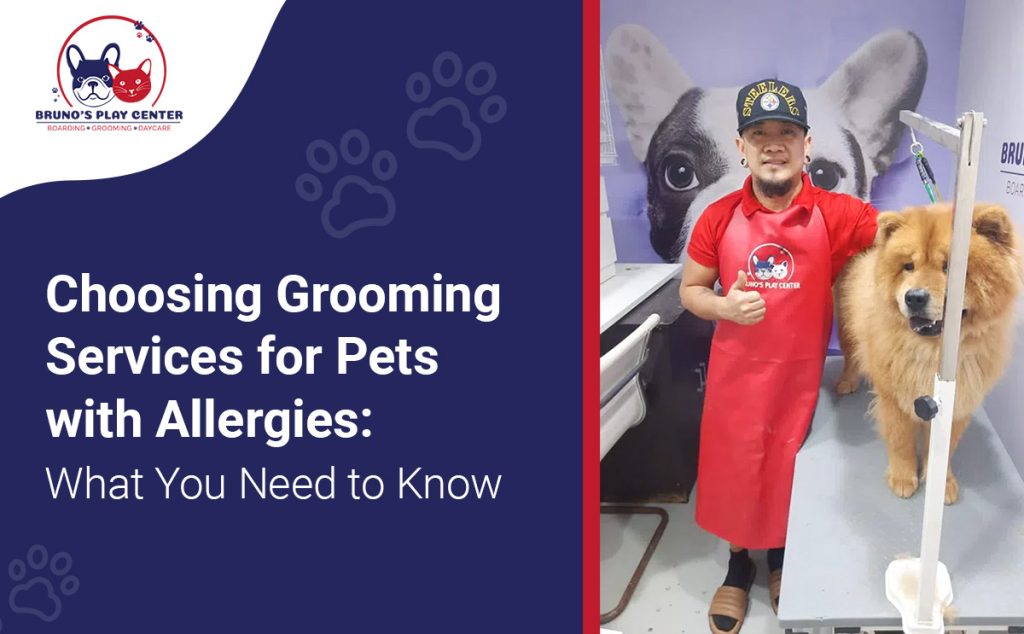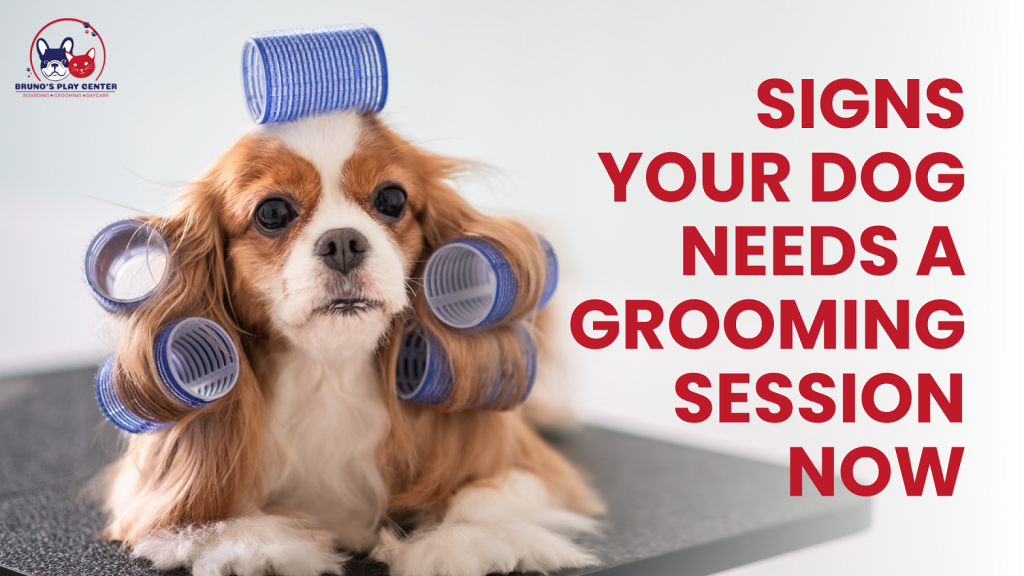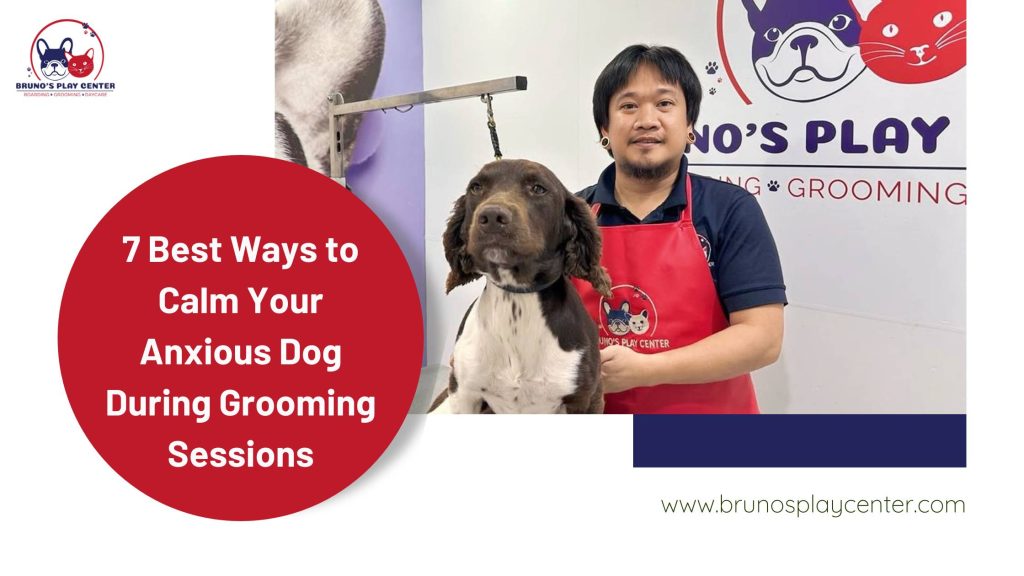Grooming is important for the general well-being of the dog along with considerations of cleanliness and comfort; but the process often feels like a fight for many pet owners. Dogs who basically hate grooming will go to the extreme of hiding when they see the brush or they may even growl when their nails are being trimmed.
It is quite common that dog hates grooming and start to feel anxious about grooming, and they often show resistance and fear. But, then again, it is not like one can just skip such practices because regular hygiene care aids in the overall health of the dog.
Why Do Some Dogs Fear Grooming?
A dog may be afraid of grooming because of its personality, lack of interaction, or bad experiences in the past. There are many things that can cause fear, including associative memories, too much stimulation, and bad childhood experiences. For pets that are easily stressed or have certain health problems, being sensitive to sensory input can make brushing painful.
1. Understanding The Fear Factor
When dogs react to being groomed, they are not disobeying. It is just that they are showing signs of anxiety because they have sensed a threat. So it becomes important to handle them with care because these signs can show how they’re feeling inside.
Do not give an aggressive or upsetting reaction to these signs because dogs are very sensitive to their owners’ feelings and actions. The fear response can become deeply held over time, making it hard to change.
2. Sensory Overload
Dogs are more sensitive to the world around us than we are. Sometimes too much noise can make them feel irritated. Their sensory overload poses a significant issue and can overwhelm a dog’s nervous system. This is particularly common in puppies, rescue dogs, and those with sensory processing difficulties.
So, the situation can be helped by breaking grooming into smaller, easier-to-handle tasks. You can also switch to scent-free products and make sure the area is calm. Recognizing the signs of sensory overload is essential for adapting the grooming approach.
3. Lack Of Grooming Habit
If you don’t groom your dog frequently or if you don’t stay true to the grooming calendar that you have set. Then the dog (and its owners) may begin to feel disaffected by the procedure. Stress and unfamiliarity can enter in due to the lack of regular exposure and comfort. This is one of the reasons that dogs hate grooming.
Many new pet parents tend to postpone dog grooming, making it more difficult to get comfortable. However, grooming your dog regularly brings adaptability to it in prevention of any discomfort or harm.
Signs That Your Dog Is Anxious While Being Groomed
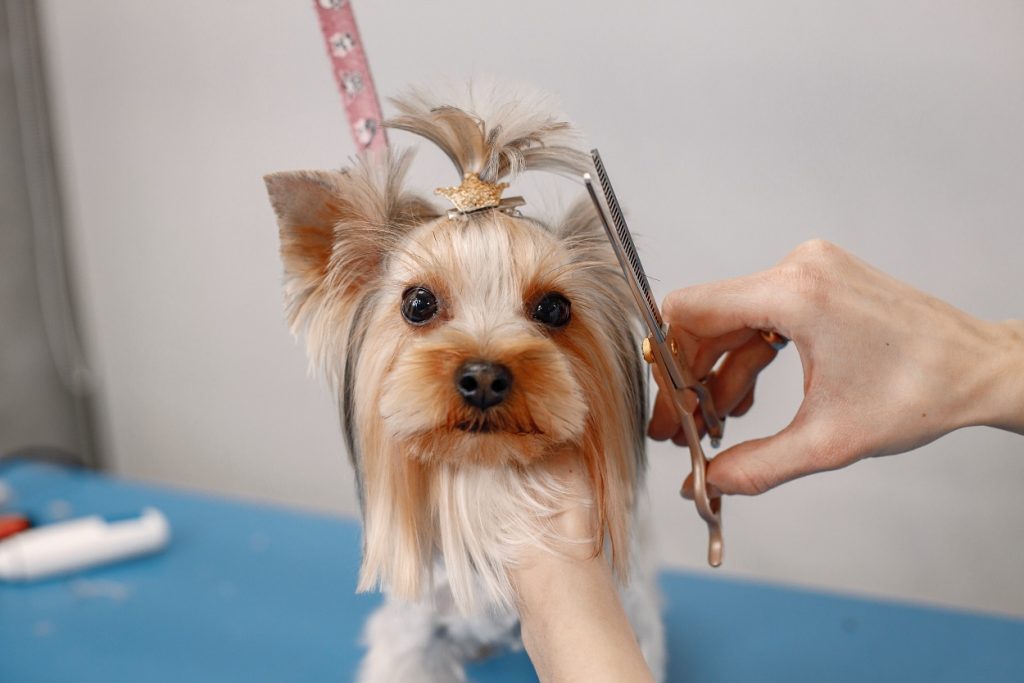
Stress manifestations can be seen in observable behavioral changes. There may be anxiety interfering with the grooming session. You can ease the process and make it enjoyable for your dog if you prepare for the occasions.
1. Behavioral Warning Signs
The way a dog acts while being groomed can be a sign that it is anxious, confused, or uncomfortable. They might get defensive, aggressive, and sometimes super anxious. When grooming tools are introduced, dogs may hide and run away, make too many noises, or show other signs of discomfort. After grooming, doing destructive things can also be a sign of emotional distress. It’s important to know these signs if you want to rebuild trust and make grooming a gentle, positive experience.
2. Physical Symptoms
If you think that it’s just that your dog hates grooming, there might be more to the story. Dogs may get anxious during grooming if they think they are under stress or are being threatened. This can cause physical reactions like shaking, rapid breathing, excessive drooling, more shedding, a faster heart rate, and a visible tension. These behaviors, which may be the dog’s way of dealing with things, may last even after the grooming is over. To help the dog feel better about grooming, it is important to understand and acknowledge these physical signs.
3. Emotional Impact
Everyone is familiar that dogs are very sensitive and carry emotions such as fear, discomfort and helplessness. Sometimes it can lead to anxiety, behavioral changes and avoidance. Thus, grooming plays a major role in your dog’s behavior, mental health and relationships. The emotional damage related to grooming can often go unnoticed or misinterpreted. Therefore, it is important that grooming be approached in a kind and understanding way.
Gentle Home Strategies to Simplify Grooming
When trying to make grooming mindfulness fun for your dog it is best to go slowly, and only do so when your dog is calm and most relaxed. Therefore, it is important to help them, and allow them to become familiar with the tools associated with grooming. It helps to reinforce a positive environment, and rewarding positive behavior during grooming time. But still if you have tried it all and face resistance, then turning to professional dog groomers in Dubai can be a game-changer.
1. Divide The Routine Into Smaller Steps
If you divide the grooming process into small components, dogs that dislike grooming will feel less stressed and anxious. You can start small like brushing a small area of the dog’s fur, add more components to each phase, and see if your dog is still comfortable. Slowly make each session last longer while highlighting the good times. When you slowly increase the number of nails you cut, use clippers that make little noise or vibration.
2. Make It A Game
You can keep your dog interested by giving him interactive toys and rewarding activities with treats. To make the game more fun, use your dog’s natural instincts. For example, you can hide a toy or tell them to chase the brush. This will add a fun element to the grooming routine.
3. Utilize Calming Products
Natural calming sprays usually contain essential oils like lavender and chamomile, while pheromone sprays contain synthetic pheromones. Anxiety relief is also offered through calming collars, and some supplements may even stimulate serotonin production.
Anxiety vests or comfort wraps apply gentle pressure while soothing sounds help drown disquieting noises. If your dog isn’t a big fan of grooming, calming mats can offer them a safer and more comfortable feeling.
Conclusion
To deal with grooming resistance effectively, you should first understand why it happens. By adding more calming products and breaking up the grooming into smaller steps, you can make the grooming session more enjoyable. If your dog is fearful of being groomed, it must be done with patience and perseverance.
You have to go to the veterinary if there are intense phobias, aggression, or specialized needs, and a professional may have to intervene. Even if things still feel too tough, it’s okay to ask a groomer or vet for help. Professional dog groomers in Dubai, like those at Bruno’s Play Center, are experts at handling nervous pups with gentle care. In the end, a relaxed dog and a clean coat? That’s a win-win you need.
